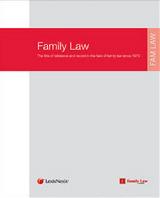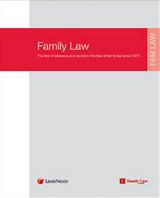- News & Comment
-
Online Shop
Online Services
Looseleafs
Law Reports
Books and eBooks
-
CPD & Events
Webinars
Events
- Authors
- About Family Law
- Contact












 11 FEB 2025
11 FEB 2025

 11 FEB 2025
11 FEB 2025

 11 FEB 2025
11 FEB 2025

 11 FEB 2025
11 FEB 2025

 11 FEB 2025
11 FEB 2025









Partner, Anthony Gold Solicitors
Reluctant respondents include those who are represented and those who are not. The respondent in person is an increasing trend for all sorts of reasons. Amongst the reasons are the lack of public funding for persons of moderate means. Some respondents probably do not accept legal advice so decide to proceed on their own without being fettered by their legal advisers. Dealing with a litigant in person (‘LIP'), usually a respondent in person, is always a challenge. However, it can also provide opportunities.
In the course of over 20 years' professional practice, I have encountered a number of different types of reluctant respondent. The first type who is perhaps the most difficult to deal with, is the one who threatens; the threats may be of violence or bankruptcy or leave the jurisdiction or disappear. The second type is the non-disclosing respondent. The third is the ostrich who ignores everything and buries his head in the sand.
There are always a number of risks in acting against LIPs. In some cases, their strategy may be to wear you and their spouse down. There are numerous tactics they may employ, some of which may provoke un-lawyerlike behaviour and use the behaviour to make professional complaints against you. It is therefore very important that you adhere to the excellent advice contained in the Resolution guide (‘Guide to Good Practice on Dealing with Litigants in Person' which is available on the Resolution website). A second risk is increased costs for your client. Some litigants in person have a deliberate strategy to increase costs for the other party. Finally, disclosure when it comes may be tardy and haphazard. It is not unusual for disclosure to be made in a series of paper bags - at least that has been my experience. However some LIPs can provide opportunities as well for the canny lawyer.
To read the rest of this article, see January [2011] Family Law journal.
To log on to Family Law Online or to request a free trial click here




Leave a commentOrder by
Newest on top Oldest on top